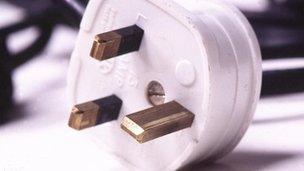Engineers boost battery strength with small holes
- Published

Batteries for phones and laptops could soon recharge ten times faster and hold a charge ten times larger than current technology allows.
Engineers at Northwestern University in the US have changed the materials in lithium-ion batteries to boost their abilities.
One change involves poking millions of minuscule holes in the battery.
Batteries built using the novel technique could be in the shops within five years, estimate the scientists.
Fast movers
A mobile phone battery built using the Northwestern techniques would charge from flat in 15 minutes and last a week before needing a recharge.
The density and movement of lithium ions are key to the process.
Dr Harold Kung and his team at Northwestern said they have found a way to cram more of the ions in and to speed up their movement by altering the materials used to manufacture a battery.
The maximum charge has been boosted by replacing sheets of silicon with tiny clusters of the substance to increase the amount of lithium ions a battery can hold on to.
The recharging speed has been accelerated using a chemical oxidation process which drills small holes - just 20-40 nanometers wide - in the atom-thick sheets of graphene that batteries are made of.
This helps lithium ions move and find a place to be stored much faster.
The downside is that the recharging and power gains fall off sharply after a battery has been charged about 150 times.
"Even after 150 charges, which would be one year or more of operation, the battery is still five times more effective than lithium-ion batteries on the market today," said lead scientist Prof Harold Kung from the chemical and biological engineering department at Northwestern.
So far, the work done by the team has concentrated on making improvements to anodes - where the current flows into the batteries when they are providing power.
The group now plans to study the cathode - where the current flows out - to make further improvements.
A paper detailing the work of Prof Kung and his co-workers has been published in the journal Advanced Energy Materials.
- Published17 October 2011
- Published12 October 2011
- Published26 September 2011
- Published10 September 2011